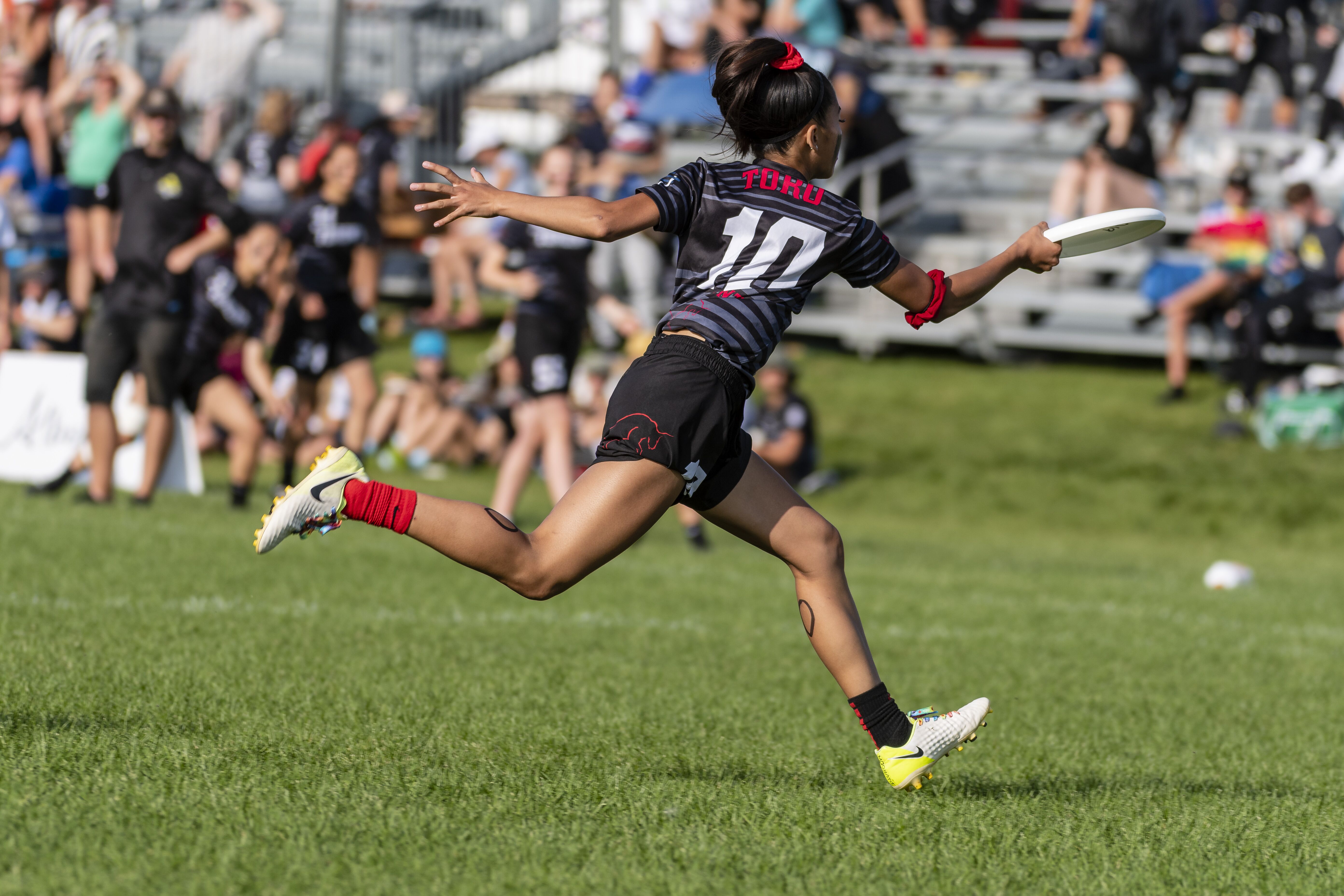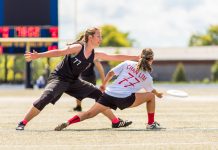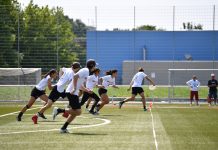Ultimate Canada Magazine – March 17, 2020.
Written by: Daniel Galati, HSP Assistant Coach
Edited by: Mike Haddock, HSP Head Coach
The following is the third in a 4-part blog series about designing a High Performance Program for Ultimate Athletes. In this series, we will explore critical foundational exercises within Strength, Plyometrics, Agility, and Stability/Accessories, and provide some insight on our programming. Please note, there are risks associated with any exercise and should be considered carefully for any athletic program. Consult individually with a professional as needed.
What Are Plyometrics & Why Should We Use Them?
To give you a clear starting visual – plyometrics are essentially jumping and skipping exercises! We tend to get confused by which exercises are specifically Power vs Speed vs Plyometric, so here is a quick overview. In order to be a “true plyometric”, the exercise must utilize and take advantage of the Stretch Shortening Cycle (SSC). The SSC is a biomechanical event where a muscular stretch (such as experienced during a landing) can be used to amplify the amount of force that our muscles are able to produce (when we subsequently jump/take off). It is like quickly pulling and releasing an elastic band, then watching the band shoot across the room. From a training perspective, plyometrics are exercises that aim to recreate the speeds and intensities of athletic actions or moments that take place during competition.
Exercises must have all of the following five phases to be considered a “true plyometric”:
- Touch Down Phase: The very first moment that the toes and foot make contact with the ground during landing.
- Eccentric Phase: The phase where we absorb the landing force (and eccentrically load/lengthen our muscles).
- Amortization Phase: (aka the transition phase) where we transition from an absorption to an extension force. This phase is when the muscle(s) are stretched to near full capacity and have the most stored energy for subsequent use.
- Concentric Phase: The phase in which the muscle uses the stretch to aid in the speed/force of contraction, and propels/accelerates the body.
- Take Off Phase: The moment when the toes and foot leave the ground.
While all plyometrics comprises all five of these stages, it is important to point out that there are actually two different types: Slow Response and Fast Response.
The first, slow response plyometrics, is definitely the version that you might be thinking about – “normal” jumping-type movements. Slow Response really means “long relative period of time on the ground” (>251 milliseconds), and since there is a greater amount of time on the ground, the knees and hips are able to play a larger role in absorbing and producing force. This means that the hips and knees (including glutes, hamstrings and quad muscles) are the primary contributors.
The second type, fast response plyometrics, is actually very different and include skipping/bouncing exercises. Fast response means a very short moment “on the ground” (< 250 milliseconds). As one would imagine, the extremely short amount of time on the ground does not allow for the knees and hips to absorb or produce much force. In order to get the most out of the quick response time, the ankles will be the main joint responsible for force transference; which is why fast response plyometrics are said to be ankle dominant. It is important to keep the foot and ankle rigid while creating a rapid whipping action upon ground contact in order to absorb and utilize the ground reaction force in this situation.
If you are unfamiliar with plyometric exercises, you may want to begin with regressions such as landing mechanics. This allows a beginner to get a feel for the movement pattern and ensure that they are in a safe, stable landing position from which to generate force.
Key Offseason Plyometrics Exercises
Movement #1 – Two-Foot Jumps (Squat Jumps, Without Arms)
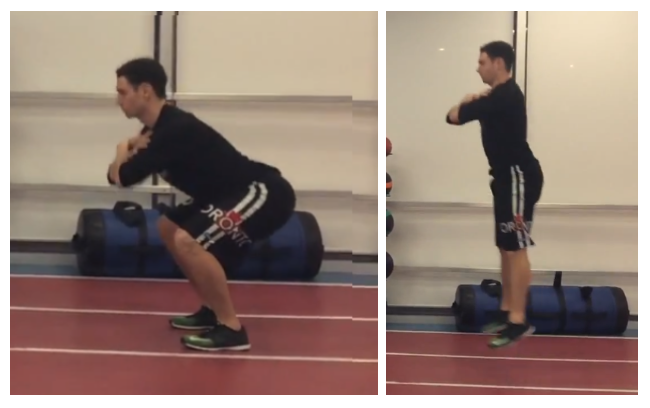
Left Picture: Starting/Finishing Position. Right Picture: Flight/Mid-jump position
Two-foot jumps are a great example of hip dominant, slow response plyometrics. Start with feet shoulder-width apart and arms crossed. Get into a ¼ squat position and jump up as high as you can. Absorb the force by landing with both feet and descending into the ¼ squat position before beginning the next rep. Similar to any squatting movement, be sure to avoid the knees wobbling or tracking towards the midline of the body. Begin these jumps with hands crossed before progressing to fully utilizing the arms.
Movement #2 – Skipping Rope Introduction
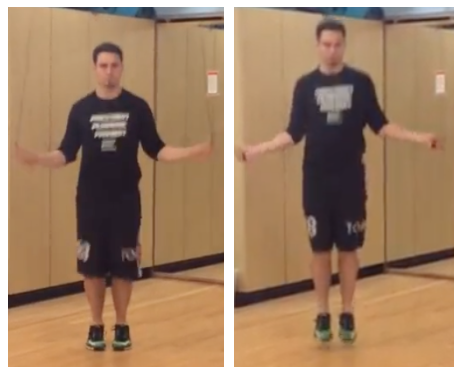
Skipping is one of our foundation ankle dominant, fast response plyometric exercises. To begin, stand on the rope and adjust the handles to approximately chest height. While skipping, ensure that the knees are fairly straight, with the majority of the jumping work being done by the foot, ankle and calf muscles. This may take some time to get used to as the majority of the lower body movement takes place from the knees and/or hips.
Movement #3 – Travelling Skips
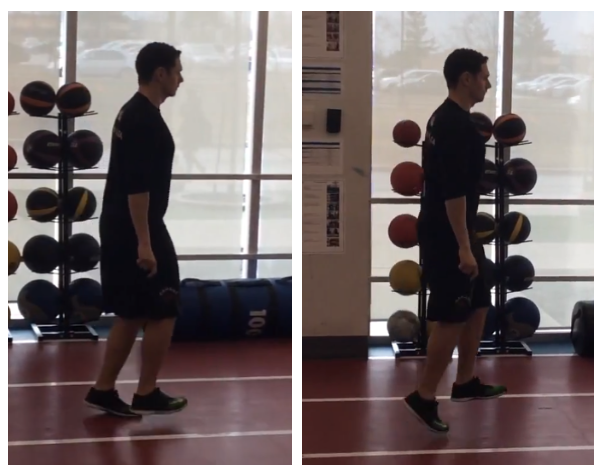
Very similar in technique to our skipping rope, travelling skips are an example of ankle dominant, fast response plyometrics. The main difference between travelling skips and normal skipping is that travelling skips are single leg (unilateral) in nature and involve travelling either forward, backward or sideways. During the set, you will alternate between the right foot and left foot when you bounce. This will allow us to see and improve upon any muscular or neurological deficiencies that may be present from left to right. Again, it is important to keep a relatively straight knee, utilizing a rigid ankle and the calf musculature to bounce off of the ground with maximal force.
Mike Haddock is the owner of Haddock Sport Performance (HSP), and has been the head Strength & Conditioning Coach for Ultimate Canada. If you would like to learn more about HSP tips, technique, and work; follow Mike Haddock and Daniel Galati on Instagram!
